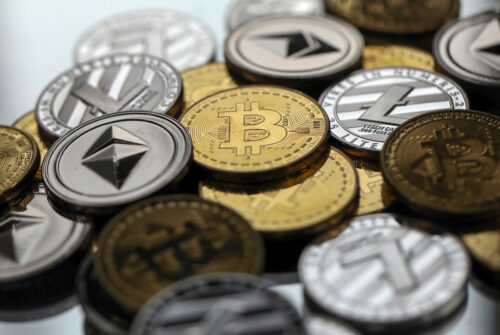
Let’s start with what halving is. The word itself comes from the English “halving”—the process of reducing the rate of generating new units of cryptocurrency and, consequently, reducing the reward size for miners per mined block. Traditionally, halving leads to a decrease in the number of BTC in the market and, as a result, an increase in the coin’s price. Let’s explore what the crypto community is expecting from this year’s halving.
Halving is the planned reduction of the number of newly issued bitcoins (BTC) created and distributed among miners who verify and confirm transactions in the network. The halving procedure is provided in many blockchain networks, but Bitcoin’s halving is the most well-known.
Why is Halving Necessary?
The main goal of halving is to curb cryptocurrency inflation by reducing the issuance of new coins. The issuance of Bitcoin is limited to 21 million coins, and through the halving mechanism in the Bitcoin network, the supply of coins increases progressively and noticeably lags behind the pace of demand growth.
In the early years of Bitcoin’s existence, miners received 50 BTC per mined block, after the 2012 halving — 25 BTC, since 2016 — 12.5 BTC, and since 2020 — 6.25 BTC; in 2024, they will receive 3.125 BTC.
How Does Halving Affect Cryptocurrency Prices?
Halving usually stimulates an increase in the cryptocurrency price. Before and after halving, demand for cryptocurrency exceeds supply, and the price starts to rise.
Halving has the most significant impact on the Bitcoin price. For example, after the first halving in 2012, the Bitcoin price increased from $12 to $1,000, and after the second halving in 2016, it surged from $670 to $20,000.
The creator of Ethereum, Vitalik Buterin, compared Bitcoin’s halving to the limited reserves of gold, which have maintained their value as an international medium of exchange and store of value for over six thousand years.
It is the upcoming halving that JPMorgan analysts attributed to the current surge in BTC price. “The retail impulse that emerged in February triggered a powerful rally this month,” noted Nikolaos Panigirtzoglou, a financial holding expert.
PrivatPools, a mining pool team, agrees: “The market knows when the halving will happen and prepares for it in advance. Typically, the price of Bitcoin starts to rise about six months before halving, and you can observe the peak price more than a year after halving. Just look at past halvings: the first one on November 28, 2012—BTC rose from $12 to $1,207 (by November 28, 2013), the second one on July 9, 2016—growth from $647 to $18,972 occurred by September 2017, the third one on May 11, 2020—on that day, the price of Bitcoin was $8,821, and by April 14, 2021, it had soared to $63,233. So, this time, we expect the price to rise! Our forecast is $125,000 – $175,000 per Bitcoin by the end of 2025.”
What Happens After Halving?
After halving, miners face several significant changes:
- Reduction in Block Reward: During halving, the reward for a mined block is halved. For example, before halving, miners received 6.25 BTC per block, and after halving, they only receive 3.125 BTC. This means miners receive fewer new coins for their work, which can affect their earnings.
- Increased Competition: With a reduced reward, miners face intensified competition. Now, each miner competes for a smaller number of coins, which can lead to an increase in mining difficulty. Miners must improve their computing power and efficiency to remain competitive.
- Impact on Profitability: Halving can affect mining profitability. If the price of Bitcoin does not increase rapidly enough, miners may face unprofitable mining. However, if the price rises, miners can continue to make a profit despite the reduced reward.
- Long-Term Perspectives: Despite temporary difficulties, halving contributes to long-term stability and the limited supply of Bitcoin. Many miners believe in the future growth of the Bitcoin price, which can offset the reduced reward.
Can the Price Drop After Halving?
After Bitcoin halving, several factors can affect the price:
- Market Expectations: Many investors monitor halving events and expect a price increase after emission reduction. If the market has already factored halving into the price, there may not be a sharp increase.
- Supply and Demand: Halving reduces the supply of new bitcoins, which can lead to a shortage. If demand for Bitcoin remains high, this can support the price.
- Miners and Sales: With miners receiving fewer coins per block, they may sell more existing bitcoins to cover expenses. This can temporarily put pressure on the price.
- Geopolitical and Economic Events: External factors, such as regulation, global crises, or political events, can outweigh the impact of halving.
It is essential to remember that halving is one of many factors influencing the price of Bitcoin. The cryptocurrency market is complex and prone to volatility, so it is impossible to accurately predict how the price will change after halving. Investors should focus on long-term perspectives and not react to short-term fluctuations.





